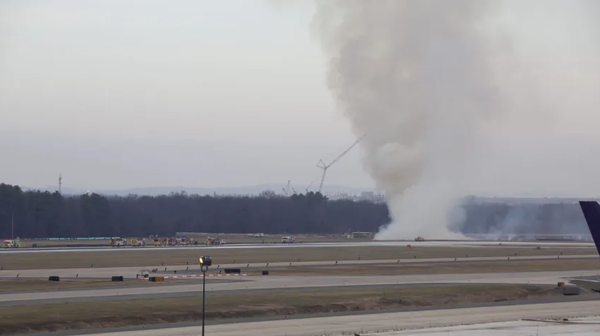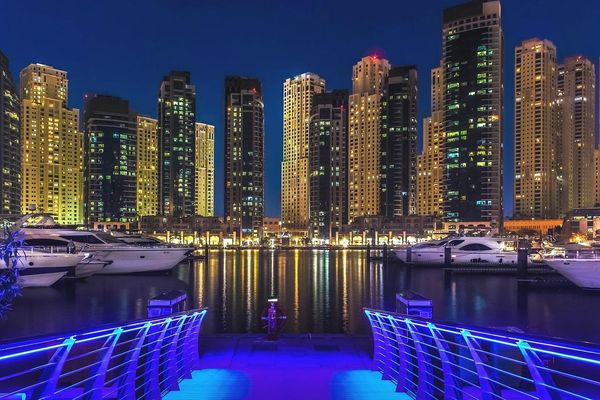The Paris Airshow, which ended last weekend, kicked off with news from two sustainable aviation ventures that are expanding their efforts in Washington state.

On the opening day of the Paris Air Show at Le Bourget, Washington state Gov. Jay Inslee announced that California-based clean energy startup Twelve plans to set up an industrial facility in Moses Lake to make jet fuel from electricity, water, and air.
ZeroAvia, a hydrogen-powered aviation startup, announced it’s growing its research and development capabilities at its facility at Everett’s Paine Field. A startup with facilities in the U.K. and California, ZeroAvia’s system produces electricity from hydrogen fuel cells to power zero-emission airplanes and is initially retrofitting its system to a series of existing aircraft.
The state’s Department of Commerce is awarding ZeroAvia a $350,000 grant to support the work, doubling the state’s investment to date. Last month, the company celebrated a partnership with Alaska Airlines to retrofit a retired plane with its propulsion system.
Sustainable aviation fuel startup Twelve shared news that it’s building a commercial-scale production facility in Moses Lake in Eastern Washington. Twelve produces synthetic jet fuel using water and carbon dioxide — drawing parallels to photosynthesis. It powers its process with renewable energy, cutting greenhouse gas emissions by 90% compared to conventional fossil fuels.

Twelve's Future
Twelve, named after the atomic mass of carbon, aims to make carbon products typically derived from fossil fuels using only renewable energy, water, and waste CO2. Besides the Washington state booth at the Paris Air Show, Inslee announced “the imminent groundbreaking of a truly green jet fuel production facility with a company that uses CO2 and water to make a truly clean, climate change-defeating jet fuel."
He said with sustainability at the top of the agenda for the aviation companies gathered in Paris, “I really don’t think you could find a more promising technology than Twelve to be a principal component of that sustainable aviation fuel supply chain.”
Electricity from renewable sources, such as solar, wind, or hydroelectric, is used to extract hydrogen from water and combine it with waste CO2 to produce hydrocarbons like those derived from fossil fuels.
Twelve CEO Nicholas Flanders said the CO2 will come from biomass waste, such as is produced by ethanol or food-processing plants, pulp and paper mills, and landfills. Because it’s made with electricity, Twelve’s synthetic version of sustainable aviation fuel is often called e-fuel. It has branded its product E-Jet.

Twelve chose Moses Lake, Flanders said, “because of the availability of green power, through hydropower, and sources of biogenic CO2, which is the carbon feedstock for our fuel, and the great policies of Washington state that are accelerating the development and deployment of sustainable aviation fuel, green hydrogen and green power.”
“Washington is such a hub for aerospace in the U.S., it makes sense that it would be the first place for this fuel that is really going to transform the industry,” he added.
Twelve’s project will provide 50 to 100 construction jobs to build the plant and 20 full-time “green jobs” in Moses Lake to operate it. Flanders said the first e-fuel produced there should be fueling flights starting next year.
“Then in 2025 and beyond, it’s all about scaling millions and millions of gallons of capacity of this fuel,” he said. “This is a really transformative step as a company because this is the world’s first commercial e-jet plant.”
Though fossil fuel-derived energy may be used at some point in the production and distribution of e-fuel it is expected to have 90% lower life cycle emissions than regular jet fuel.

Flanders said that in Twelve’s labs and manufacturing facility in the Bay Area, it has scaled up its proprietary electrolyzing reactors to “suitcase-sized” models, dozens of which will run at the planned Moses Lake facility.
Washington state is not providing direct funding to Twelve, but recently passed substantial tax credits for large-scale producers of clean energy and is streamlining the permitting to accelerate building clean technology facilities. Separately Monday, Inslee announced a grant from the state’s reserve fund to ZeroAvia.
ZeroAvia's Zero Carbon Plans
ZeroAvia's Everett site currently employs 30 people researching electric propulsion and retrofitting a retired Alaska Airlines Q400 turboprop to run on hydrogen.
Youcef Abdelli, ZeroAvia’s chief technical officer for propulsion who heads the Everett site, said in Paris he plans to hire rapidly and to have between 80 and 100 employees in Everett by year-end and 150 by the middle of next year.
Although aerospace companies generally are having a hard time hiring talent, Abdelli said others “don’t have the same passion, the same sense of mission and purpose” that ZeroAvia offers and he’s confident he’ll attract the engineers and technicians he needs.
Miftakhov described Everett as “a hugely important location for us” because of the availability of aerospace and electrical engineers in the region and the hub of aerospace industry peers in the state also pushing toward sustainable flight.

In a statement, Miftakhov added that the state funding “enables us to push forward quickly on our targets for a commercial flight of up to 20-seat aircraft by 2025, and up to 80-seat aircraft by 2027.” Despite this, ZeroAvia’s planned zero-carbon-emitting propulsion system is still in the developmental stage.
In 2020, ZeroAvia achieved an eight-minute hydrogen-powered flight of a six-seat Piper airplane. The U.K. government that year gave the company a $16 million grant to develop a 19-seat hydrogen-powered aircraft capable of a 350-mile flight.
The Piper completed more than 30 flights. But in a setback, the plane crashed in 2021 when technical difficulties occurred. “It really forced the company to get more discipline around a number of areas,” Miftakhov said. “We revamped our test processes. We set up a professional flight-testing organization.”
In January this year, ZeroAvia achieved in the U.K. a 10-minute hydrogen-powered flight of a 19-seat Dornier 228. That aircraft has completed eight flights since then. In May, Alaska Airlines donated the Q400 regional turboprop, also known as the De Havilland Canada Dash 8 aircraft, to be retrofitted with ZeroAvia’s hydrogen-electric propulsion system.

ZeroAvia aims to certify its propulsion system and then retrofit it and certify it to fly passengers on various existing small aircraft. The first such product, which Miftakhov said he expects to certify in 2025, is a 13-seat Cessna Grand Caravan.
The retrofit of the Alaska Airlines Dash 8 will be the biggest step up. Miftakhov said the company expects to have to raise another $100 million to get the Grand Caravan certified to carry passengers. And he said it will take about a further $200 million to get the Dash 8 through the same process.
The bigger plane will require different, higher-temperature fuel cells and will need a more complex geared drive shaft instead of the direct drive shaft on the smaller plane. Miftakhov said he expects it will take until 2028 or 2029 to get that model certified for passenger service.
Looking Forward
Another startup, Universal Hydrogen, is chasing the same goal of hydrogen-powered flight. In March, it flew a Dash 8 on hydrogen power at Moses Lake for 15 minutes.

Both companies face the challenge of creating an infrastructure to deliver “green hydrogen” — produced using sustainable energy — to airports around the globe. For ZeroAvia, it’s a matter of tapping into electricity from renewable sources and building electrolyzers to generate the hydrogen using that electricity.
“With electrolysis, we’re sort of where we were with solar panels and winds 10 or 15 years ago,” Miftakhov said. “The capacity growth is just at the beginning right now and we’ll see orders of magnitude higher production capacity.”
Making a Stopover in Dubai? Discover How to Book a Yacht and Explore the City in a New Way » China Eastern Inaugurates New World's Longest Flight » Maiden Brazil: Virgin Australia Welcomes the Iconic Embraer E2 »
Comments (0)
Add Your Comment
SHARE
TAGS
NEWS Sustainability SAF Sustainable Aviation Fuel Fuel Cell Carbon Emissions Hydrogen ElectrolysisRECENTLY PUBLISHED
 When Will the Boeing 777X Enter Service? Delays, Certification, and 2027 Outlook
The Boeing 777X was meant to be the crowning achievement of modern wide-body aviation: a folding-wing giant capable of carrying more passengers more efficiently than any twin-engine jet in history. Instead, the program has become a case study in aerospace endurance.
INFORMATIONAL
READ MORE »
When Will the Boeing 777X Enter Service? Delays, Certification, and 2027 Outlook
The Boeing 777X was meant to be the crowning achievement of modern wide-body aviation: a folding-wing giant capable of carrying more passengers more efficiently than any twin-engine jet in history. Instead, the program has become a case study in aerospace endurance.
INFORMATIONAL
READ MORE »
 Engine Failure Forces United 777 Emergency Landing, Starts Brush Fire at Dulles Airport
A United Airlines Boeing 777-200ER bound for Tokyo made a safe emergency landing at Washington Dulles International Airport (IAD) on Saturday afternoon after an engine failure shortly after takeoff ignited a brush fire near the runway. All 275 passengers and 15 crew members aboard United Flight 803 were reported uninjured.
NEWS
READ MORE »
Engine Failure Forces United 777 Emergency Landing, Starts Brush Fire at Dulles Airport
A United Airlines Boeing 777-200ER bound for Tokyo made a safe emergency landing at Washington Dulles International Airport (IAD) on Saturday afternoon after an engine failure shortly after takeoff ignited a brush fire near the runway. All 275 passengers and 15 crew members aboard United Flight 803 were reported uninjured.
NEWS
READ MORE »
 Making a Stopover in Dubai? Discover How to Book a Yacht and Explore the City in a New Way
Planning a stopover in Dubai? Learn how to book a yacht in Dubai and explore the city’s skyline, landmarks, and coastline from a private yacht.
INFORMATIONAL
READ MORE »
Making a Stopover in Dubai? Discover How to Book a Yacht and Explore the City in a New Way
Planning a stopover in Dubai? Learn how to book a yacht in Dubai and explore the city’s skyline, landmarks, and coastline from a private yacht.
INFORMATIONAL
READ MORE »



